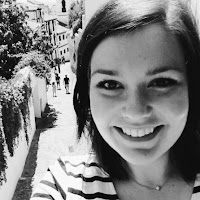 |
| Photo: Storyblocks.com |
The Cambridge Handbook of Group Interaction Analysis
 |
| The Cambridge Handbook of Group Interaction Analysis |
Researchers can apply this methodology to their own interaction data
and learn how to evaluate and select coding schemes and conduct
interaction analysis. This is an essential reference for all who study
communication in teams and groups.
- Combines the expertise of 76 leading researchers with rich theoretical and practical knowledge
- The book is applicable to different areas across many disciplines of the behavioral sciences, including psychology, management studies, communication, and education
- Presents a unique collection of coding schemes developed to study various constructs relevant to interaction research
Read more...
New Handbook of Mathematical Psychology
The field of mathematical psychology began in the 1950s and includes
both psychological theorizing, in which mathematics plays a key role,
and applied mathematics, motivated by substantive problems in
psychology. Central to its success was the publication of the first
'Handbook of Mathematical Psychology' in the 1960s...
This first volume focuses on select mathematical ideas, theories, and modeling approaches to form a foundational treatment of mathematical psychology.
Read more...
Technology and the Virtues
New Handbook of Mathematical Psychology
 |
| New Handbook of Mathematical Psychology |
This first volume focuses on select mathematical ideas, theories, and modeling approaches to form a foundational treatment of mathematical psychology.
- Demonstrates how standard advanced mathematics can play an essential role in the psychological sciences
- Focuses on mathematical foundations rather than specific empirical studies
- Aims to increase the sophistication of students and scholars in mathematical psychology and related fields in the behavioral and social sciences, mathematics, economics, and analytic philosophy
Technology and the Virtues
 |
| Technology and the Virtues |
- Applies classical philosophical traditions of virtue ethics to contemporary challenges of a global technological society
- Argues for the unique value of virtue ethics as an ideal moral framework for the 21st century human condition, in which the future of the human family is increasingly clouded by uncertainty, instability, complexity and risk
- Develops and applies a moral framework that is informed by a culturally diverse group of philosophical virtue traditions, including Aristotelian, Confucian and Buddhist perspectives
- Applies the framework to specific ethical challenges from emerging technologies: military and social robotics, new social media, digital surveillance and self-tracking, and biomedical enhancement
- Addresses risks and opportunities facing an increasingly networked and interdependent human family, challenges that demand an unprecedented cultivation of collective moral wisdom on a newly global scale
The Second Age of Computer Science
 |
| The Second Age of Computer Science |
This book describes the evolution of computer science in this second age in the form of seven overlapping, intermingling, parallel histories that unfold concurrently in the course of the two decades.
- Inquires into the actual scientific nature of computing as it evolved between 1970 and 1990, along with the mentalities of the computer scientists who brought about this evolution
- Examines how several computer scientists attempted to unify "mind and machine" and seek a universal theory of intelligence that embraced both natural and artificial intelligence
How to Write a Thesis
 |
| How to Write a Thesis |
By the time Umberto Eco published his best-selling novel The Name of the Rose, he was one of Italy's most celebrated intellectuals, a distinguished academic and the author of influential works on semiotics. Some years before that, in 1977, Eco published a little book for his students, How to Write a Thesis, in which he offered useful advice on all the steps involved in researching and writing a thesis—from choosing a topic to organizing a work schedule to writing the final draft. Now in its twenty-third edition in Italy and translated into seventeen languages, How to Write a Thesis has become a classic. Remarkably, this is its first, long overdue publication in English.
Eco's approach is anything but dry and academic. He not only offers practical advice but also considers larger questions about the value of the thesis-writing exercise. How to Write a Thesis is unlike any other writing manual.
Free Innovation
 |
| Free Innovation |
In this book, Eric von Hippel, author of the influential Democratizing Innovation, integrates new theory and research findings into the framework of a “free innovation paradigm.” Free innovation, as he defines it, involves innovations developed by consumers who are self-rewarded for their efforts, and who give their designs away “for free.” It is an inherently simple grassroots innovation process, unencumbered by compensated transactions and intellectual property rights.
Free innovation is already widespread in national economies and is steadily increasing in both scale and scope. Today, tens of millions of consumers are collectively spending tens of billions of dollars annually on innovation development.
Source: Cambridge University Press, Oxford University Press and MIT Press






























